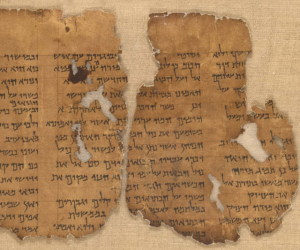Pesher Habakkuk, Lawrence H. Schiffman, Reclaiming the Dead Sea Scrolls, Jewish Publication Society, Philadelphia 1994.
The main theme of the text concerns the early history of the sect. It describes the struggle between the Teacher of Righteousness and his opponents—the Man of Lies (also termed the Spouter or Preacher of Lies) and the Wicked Priest. The Spouter is pictured as heading a community. The dispute between the teacher and the Spouter seems to have been based on matters of religious interpretation and law.
The Wicked Priest is said to have begun his rule in truth but then to have abandoned the way of truth. He then persecuted the teacher, confronting him on the holiest day of the year, the Day of Atonement. The text expects a warlike people called Kittim to attack from the islands of the sea and to punish the priests of Jerusalem. There is no question that Kittim, originally a designation for Cyprus, became a designation or code word meaning “Romans” in sectarian texts as well as in other contemporary sources. It was used because Romans were understood to come from the west, the direction of Cyprus.
Pages 226-228
What do you want to know?
Ask our AI widget and get answers from this website
